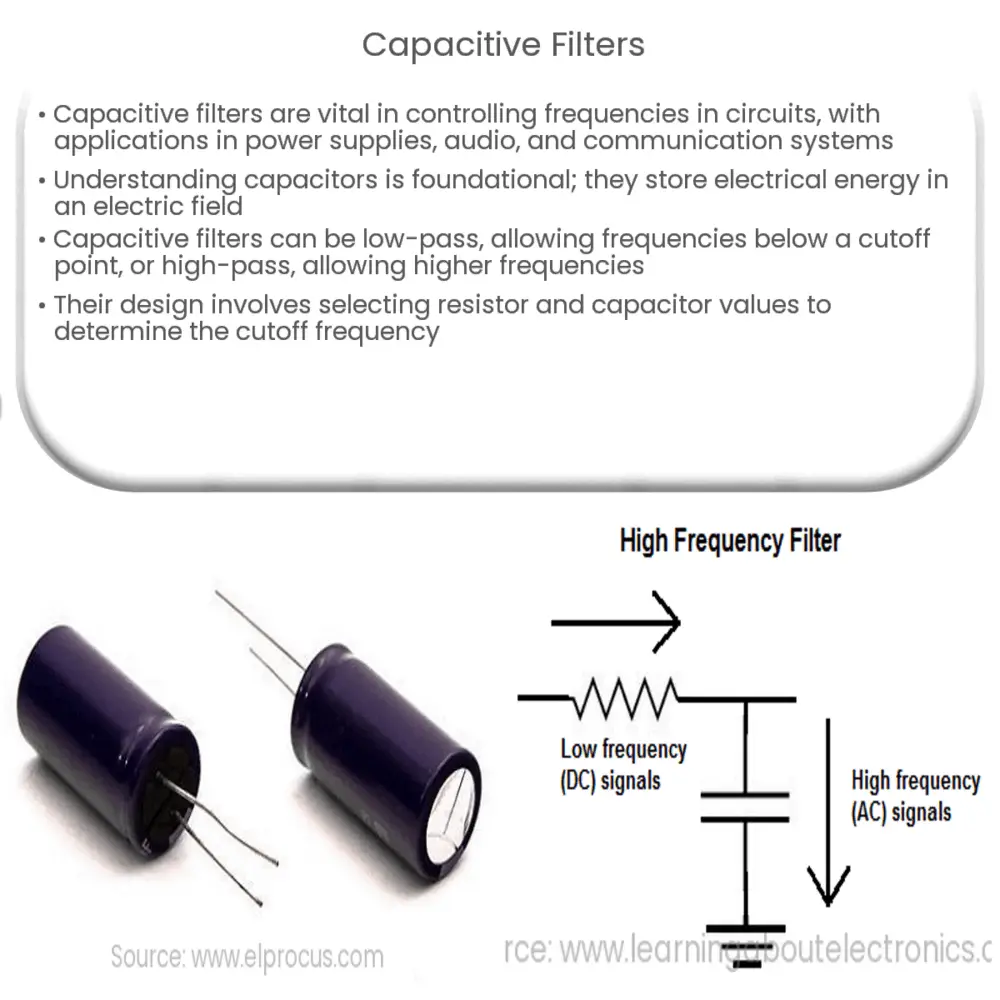Explore the fundamentals of capacitive filters, their types, design, and applications in electronics and communication systems.

Understanding Capacitive Filters
Capacitive filters, a critical concept in electrical engineering and electronics, are devices used to filter and control the frequencies that flow through a circuit. They play a vital role in various applications, from power supplies and audio systems to communication and signal processing units.
The Basic Concept of Capacitors
Before we delve deeper into the specifics of capacitive filters, it is imperative to understand the basics of a capacitor. A capacitor is a two-terminal electronic component that stores electrical energy in an electric field. When a voltage potential difference occurs between the terminals, an electric field develops across the dielectric, causing positive charge to collect on one plate and negative charge on the other.
Types of Capacitive Filters
There are several types of capacitive filters, each with distinct characteristics and uses. Some of these include:
- Low-Pass Capacitive Filters: These filters allow signals with a frequency lower than a certain cutoff frequency to pass and attenuate frequencies higher than the cutoff frequency. They are commonly used in audio amplification systems to reduce noise.
- High-Pass Capacitive Filters: Contrary to low-pass filters, high-pass filters permit signals with a frequency higher than a certain cutoff frequency and dampen frequencies lower than the cutoff frequency. They’re widely used in audio systems to balance the frequency response.
Components of Capacitive Filters
Capacitive filters typically consist of capacitors and resistors arranged in different configurations to accomplish their function. The filter’s behavior and performance are determined by the arrangement and values of these components. Two key configurations are:
- RC Series Configuration: In this configuration, the resistor (R) and capacitor (C) are arranged in series. When used as a low-pass filter, the resistor is placed before the capacitor, while for a high-pass filter, the capacitor is placed first.
- RC Parallel Configuration: Here, the resistor and capacitor are arranged in parallel. This configuration can also serve as both low-pass and high-pass filters depending on the input and output connections.
The design and application of capacitive filters are not limited to these configurations. Many other complex filter designs, such as band-pass filters and notch filters, can be achieved with the integration of inductors alongside resistors and capacitors.
Understanding the Capacitive Filter Design
Designing a capacitive filter involves determining the cutoff frequency, also known as the break or corner frequency, and selecting the appropriate resistor and capacitor values. The cutoff frequency is the frequency at which the filter starts to significantly attenuate or ‘block’ the signal. It’s calculated using the formula:
fc = 1 / (2πRC)
where:
- fc is the cutoff frequency,
- R is the resistance, and
- C is the capacitance.
The chosen values of the resistor and capacitor will determine the filter’s cutoff frequency and thus the range of frequencies that the filter will pass or block.
Real-world Applications of Capacitive Filters
Capacitive filters find a myriad of applications in electronics and communication fields. Some notable applications are:
- Power Supplies: Capacitive filters are frequently used in power supplies to smooth the pulsating DC output.
- Audio Systems: In audio systems, capacitive filters are used to balance the audio frequency response or to separate audio signals into different frequency bands.
- Communication Systems: They play a crucial role in signal processing and modulation in communication systems.
Conclusion
In conclusion, capacitive filters are an essential part of many electronic and communication systems, helping to control the flow of different frequency signals within circuits. Understanding how they function and how they can be designed and utilized is crucial for any aspiring electronics engineer or enthusiast. From power supply systems to audio and communication devices, these filters help ensure that our electronics perform at their best.
While we’ve discussed the basics and some types of capacitive filters, remember that the world of electronics is vast, and there are many other filter types and configurations to explore. The key to understanding them lies in the core principles of electronics – voltage, current, resistance, inductance, and capacitance.

